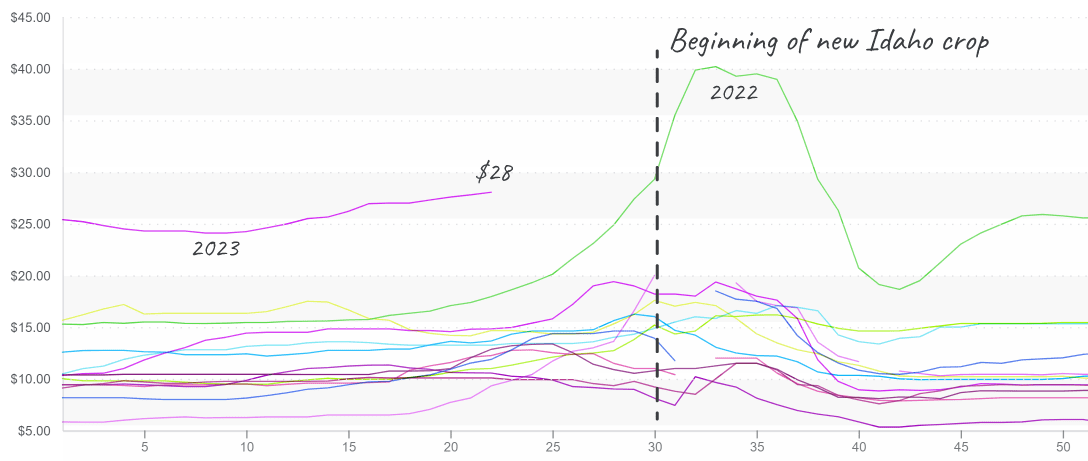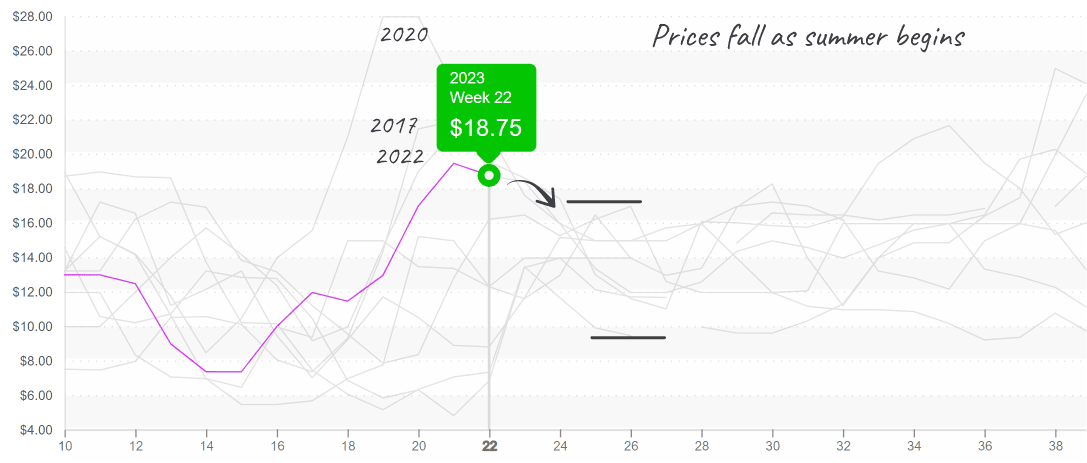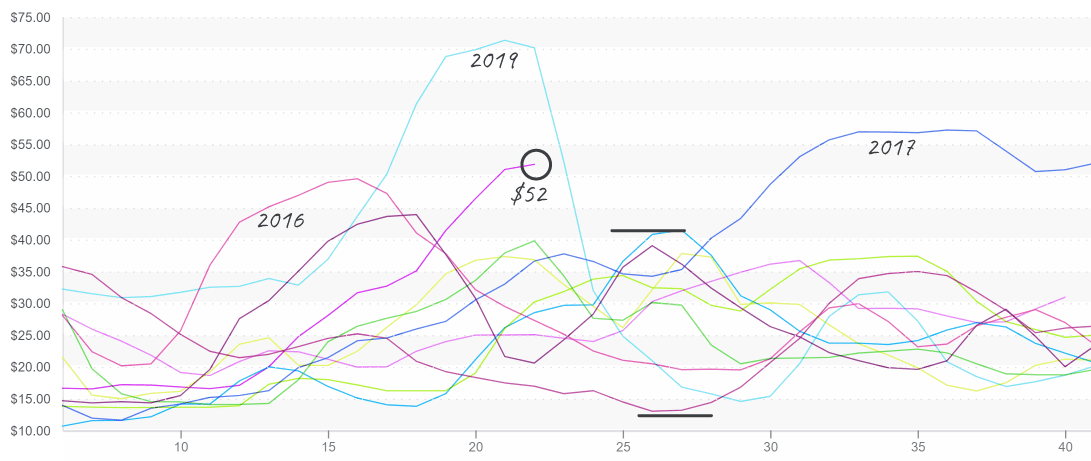At $28, an 80-count Russet potato market continues to be 60 percent higher than prior years. And unfortunately for potato lovers, pricey spuds aren’t anything new.
Each summer’s harvest provides a new opportunity to set the markets for the upcoming year. The 2022 crop was short of filling the storage, which will continue to cause havoc until August 2023. It’s too early to know, but optimism exists that this year’s new crop will bring some welcome balance to the markets.
Growers report that U.S. potato production has declined again for the fourth year. While supply has consistently flagged due to various factors, demand for potatoes (most notably processing potatoes) is swelling. As a result, all categories of potatoes have experienced supply challenges.
However, the love of French fries, potato chips, and potatoes au gratin might be stronger than the economic principle that the cure for high prices is high prices. Since, compared to the rest of the produce department, potato prices on a per pound basis remain cheap, they should perform well in economic slowdowns.
If you are craving more potato news or need a good Monday morning laugh, check out this potato-related story. It will tell you nothing about potatoes except that they pose a semi-serious hazard to drivers.
ProduceIQ Index: $1.31/pound, down -5.8 percent over prior week
Week #22, ending June 2nd
Blue Book has teamed with ProduceIQ BB #:368175 to bring the ProduceIQ Index to its readers. The index provides a produce industry price benchmark using 40 top commodities to provide data for decision making.
Expect Russet potato prices (80ct) to continue at record levels till the new crop yields are known.

Tomato prices are on the move again. Round-type is down -12 percent, and plums/romas are down -15 percent over the previous week. Eastern markets are still transitioning from South Florida to North Florida, Georgia, and the Carolinas; however, increased production out of Baja California, Mexico, and Quincy, CA, is increasing available supply and decreasing prices.
Suppliers are projecting elevated markets (compared to the average price) through mid-June. But, with so many local players joining the market in summer-soaked North America, the data doesn’t always reflect what buyers may be able to find in their region. Backyard tomato deals are about to begin.
Tomatoes, 25lb mature green 5×6, have descending prices from high levels.


Finally, Mexican grapes have arrived! Average prices are down -14 percent over the previous week and should continue to fall rapidly as supply increases out of Mexico and California over the next few weeks.
Brussels sprouts prices are at their second highest in the last ten years. Fading Mexican production and a slow-to-start California season, coupled with quality issues in the remaining Mexican crop, are thrusting prices upwards.
Brussel markets are everywhere, especially in the first half of the year. Average prices trend higher but experience less volatility as California picks up production throughout the summer. Supply should grow as soon as next week, and prices will begin to come down.
Brussels sprouts are volatile and are having another breakout year.


Too much rain in Georgia is drowning green bean supply. Prices are up +19 percent over the previous week to a 10-year high. Like tomato markets, coverage for short supply is scattered and can be found locally, as summer brings ideal growing conditions for the warm weather crop in much of the US.
ProduceIQ Index
The ProduceIQ Index is the fresh produce industry’s only shipping point price index. It represents the industry-wide price per pound at the location of packing for domestic produce, and at the port of U.S. entry for imported produce.
ProduceIQ uses 40 top commodities to represent the industry. The Index weights each commodity dynamically, by season, as a function of the weekly 5-year rolling average Sales. Sales are calculated using the USDA’s Agricultural Marketing Service for movement and price data. The Index serves as a fair benchmark for industry price performance.



